The Wildflower Impulse
A Work of Richard Gorman
All contents ©Richard J. Gorman 2007 - 2028
![]()
North Fork Yuba River, Canyon Creek Trail, October 13, 2007
L: On the exposed root and trunk of a tree. R: On the kit-kit-dizzee. Gathering lady bugs is not a sound practice: when you release them
in your garden, they simply fly away, or do not feed and breed normally. To attract them, plant angelica, dill,
and grains; and allow dandelion, wild carrot, and yarrow to grow.
October brings Fall color to the canyon, though not a lot of flowers, but there are still many living
things to be explored. This hike followed a couple of days of rain, which left the canyon squeaky clean and fragrant.
<< September
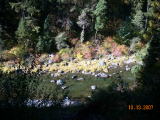
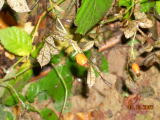
L: Canyon color near the trail head
086 Rose hips.
This rose has a viney habit, and hips, unlike my other rose, #002 on page 1, which is bushy and
has no hips on it at this time, though the flowers are quite similar.
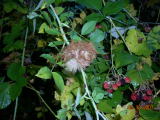
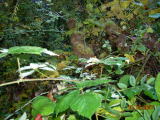
087 Rose parasite
And this other rose has a parasite on it. On the right, above the blackberry, there is a series
of these along the vine.
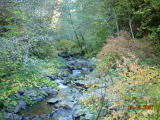
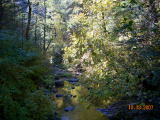
Fall Color on Cherokee Creek
The halfway point of this hike, upstream on the left, downstream right.
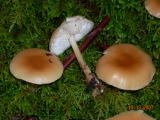
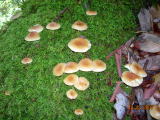
088 Fungi on Madrone
Growing in deep moss on the trunk of our landmark madrone. Cap 1 to 2 inches diameter.
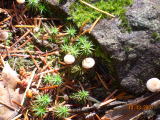
L: A Glimpse of the North Fork below Brummel Ravine
089 Fungi in the Fir duff
I only got one good picture, but observed white gills and a reddish brown stipe.
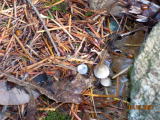
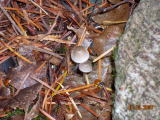
090 Fungi in the Fir duff, too.
Yet another tiny mushroom at Canyon Creek with the one above. The lady bugs and the fir needles provide size reference.
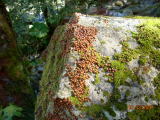
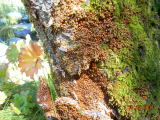
Hippodamia convergens
After documenting their comings and goings for four years, I was inspired to learn more about the lady bugs. The
Convergent Lady Bug is our native species, and hibernates in the Sierra in the Winter, after breeding and feeding
in the valley. They return to the same places year after year.
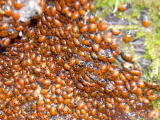
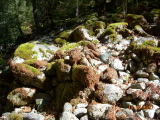
All of the reddish-orange color in the picture in the right is masses of lady bugs. They actually
make two migrations a year, first to the valley in spring, returning to the mountains in Summer, then migrating
down the river valleys, before returning home in Winter. They spend most of their adult life in the mountains.
They and their larvae consume prodigious numbers of aphids, as well as other soft bodied insects, pollen, and nectar.
Life cycle from egg to adult is just over a month; adults can live for a year. The have a simple defense strategy
-- they taste bad and are toxic.
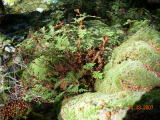
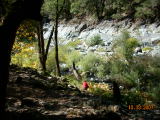
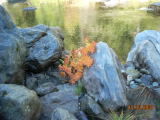
L: Where we go - the mouth of Canyon Creek
R: Umbrella Plant in fall color.
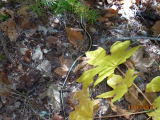
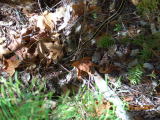
Another Trail Companion, the Striped Racer
Masticophis lateralis.
Preys on frogs, lizards, snakes (including rattlesnakes), birds and rodents. Climbs trees to rob bird's nests of
eggs and young.
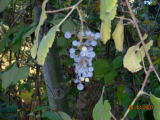
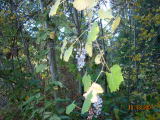
091 California Wild Grape
Vitis californica.
Found at both ends of the trail.
<< September
![]()
This page has been visited
times
since October 2007
All contents ©Richard J. Gorman 2007 - 2028
You can write me here.